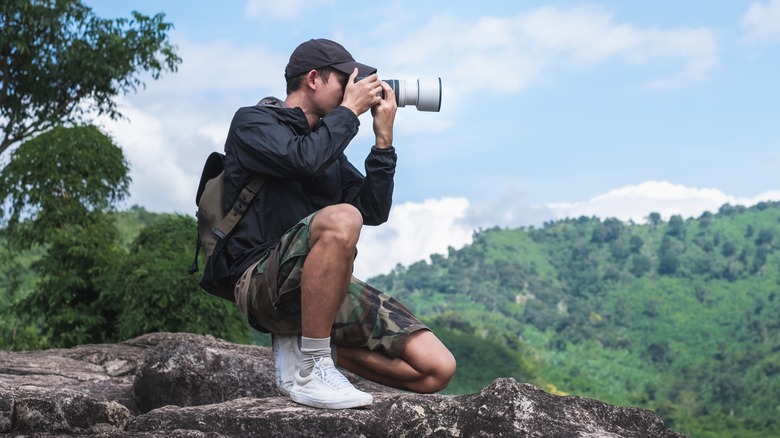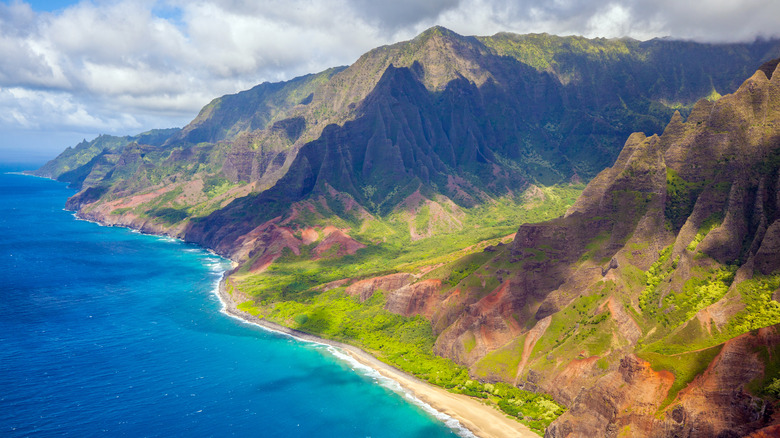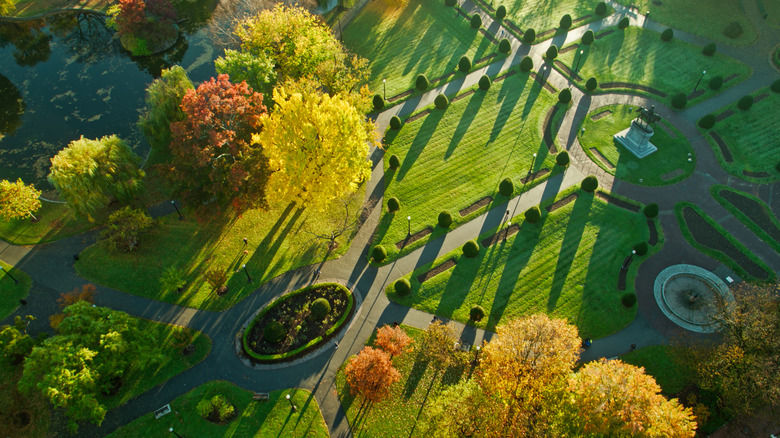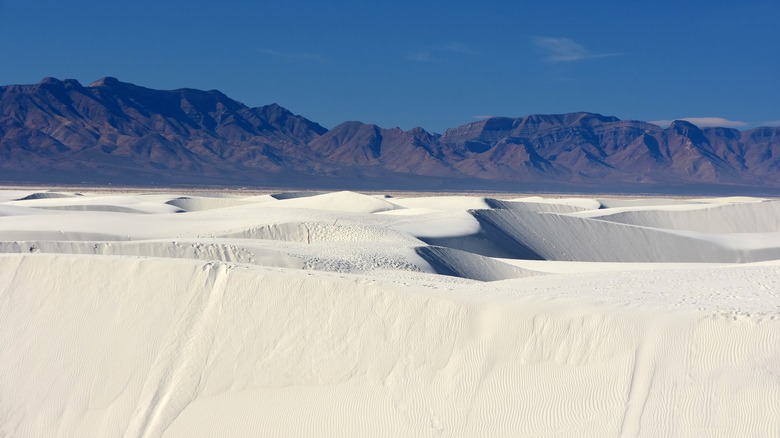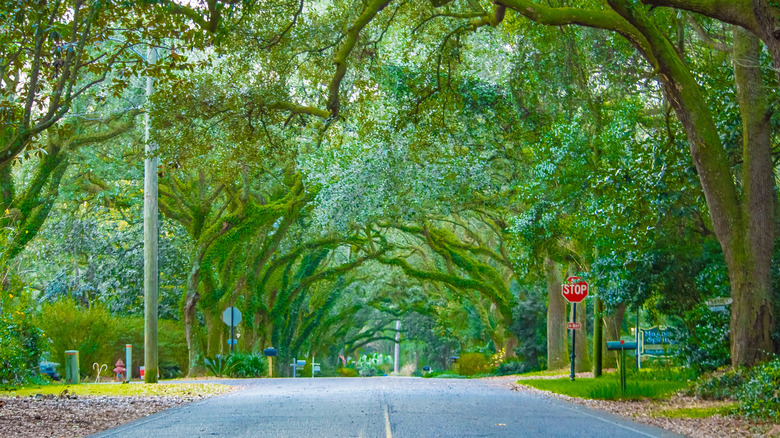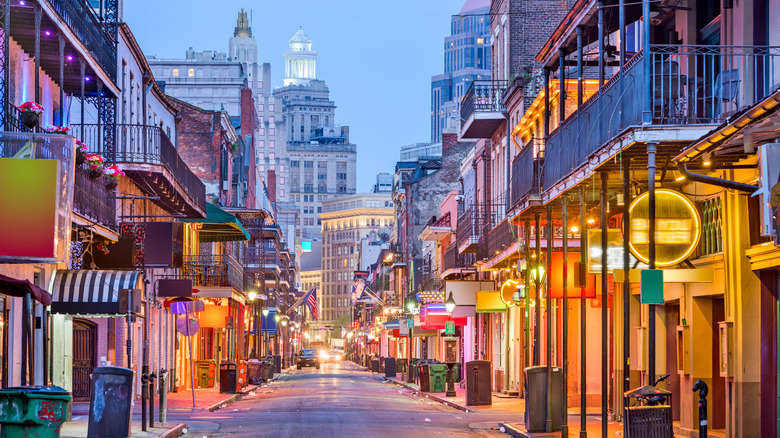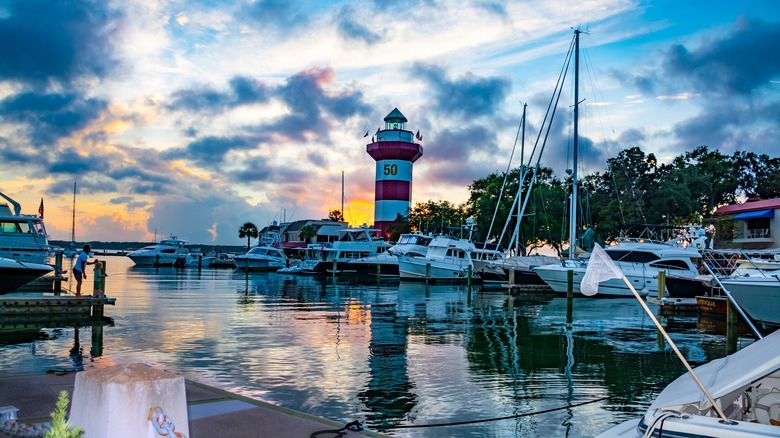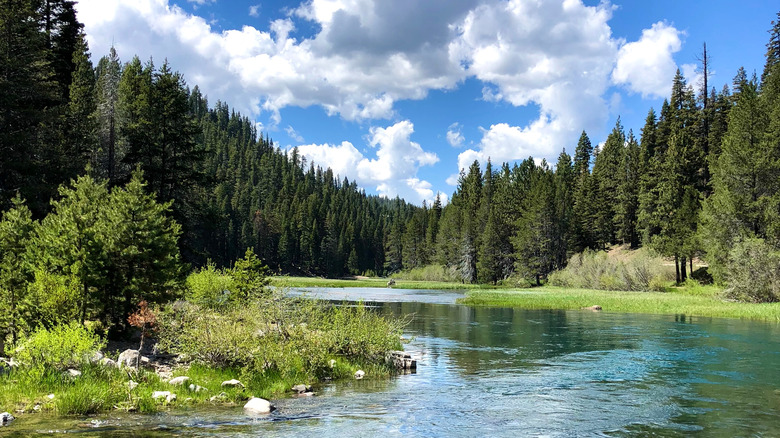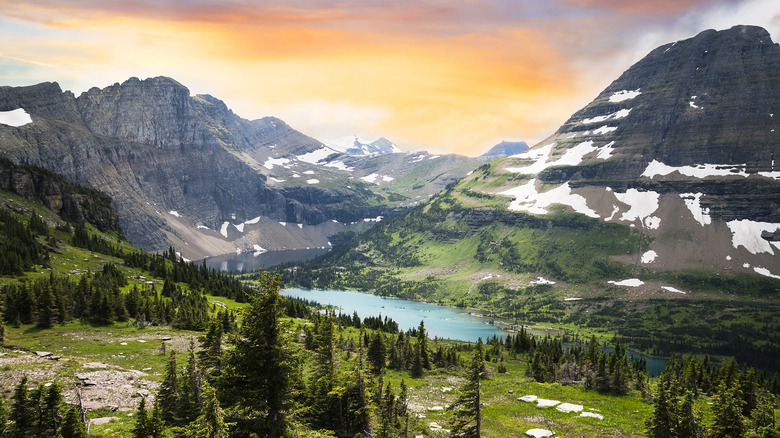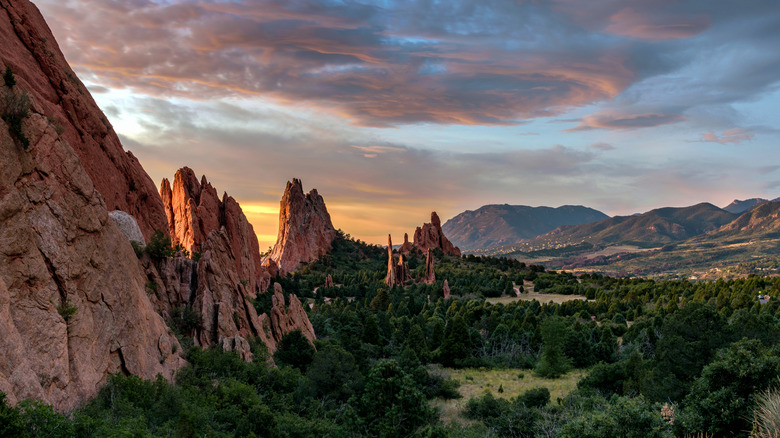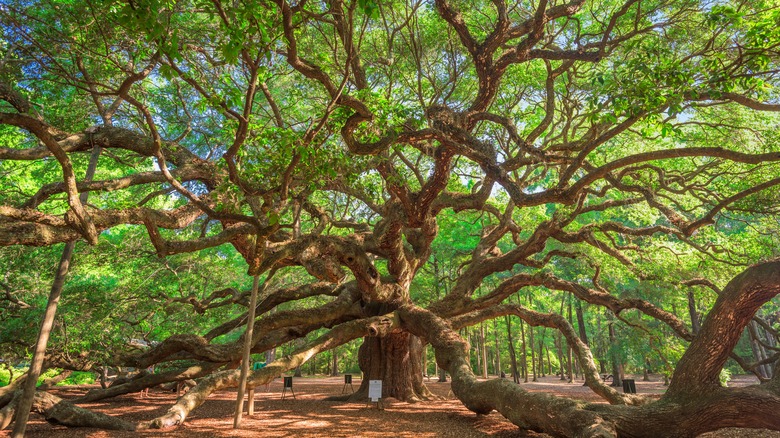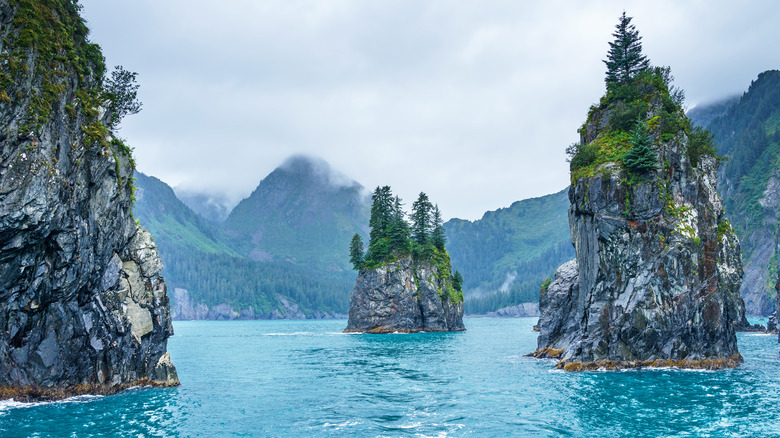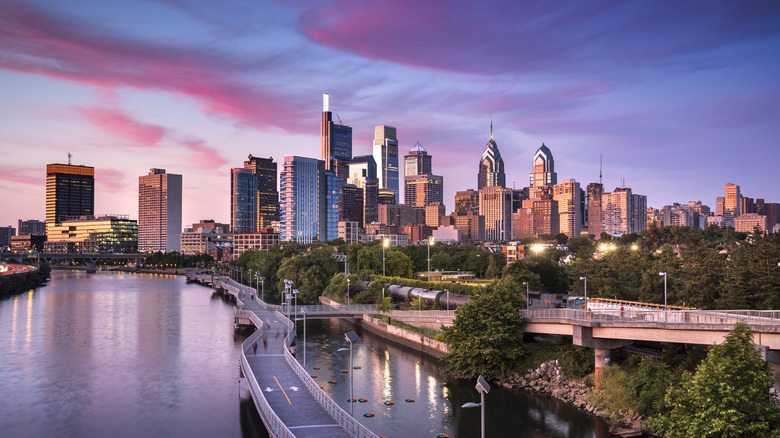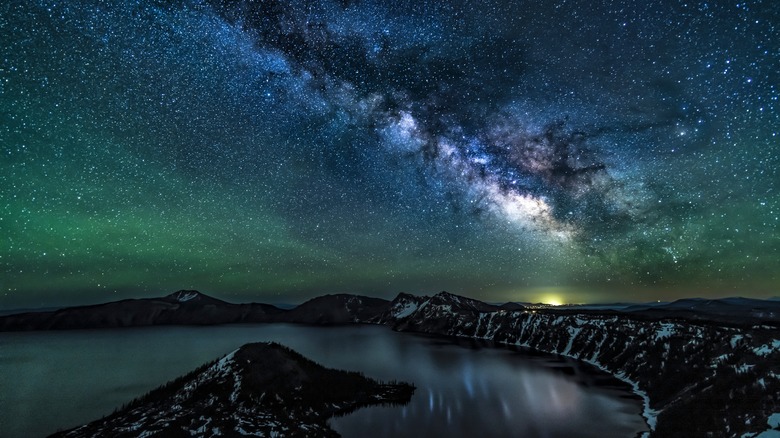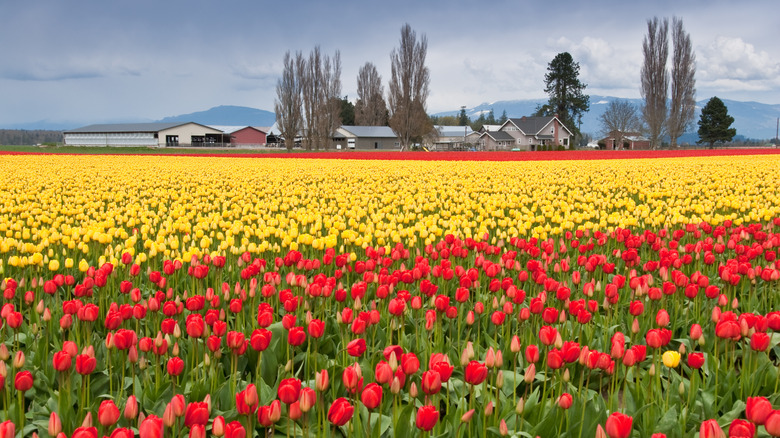Most Photogenic US Destinations To Add To Your Bucket List
The roughly 2,700 miles that stretch between America's coastal shores are home to some of the most scenic and photogenic locations in the world. From picturesque small towns on the East Coast to the almost surreal dunefields in the West, along with the immense natural environments and diverse landscapes found in between, America is overflowing with amazing destinations.
Exploring all that America has to offer takes on a variety of different focal points, especially when thinking about its photogenicity. From national parks that showcase the landscape's best qualities to historic cities and towns that can be found in all 50 states, there's no end to the pristine beauty held within the nation's borders. Although it would take a lifetime to see all of the idyllic splendor of the U.S., the following are some of the highlights that avid lovers of natural and manmade beauty should prioritize when considering their next adventure around the country.
Top spots include a plethora of national parks, of course. But there are also many towns, coastal regions, and other humanmade and natural destinations that deserve a photographer's eye. Photogenic can be a little hard to define at times, but the history and beauty of these cities and towns, natural wonders, and unique creations certainly fit the bill.
The island of Kauai, Hawaii
The islands of Hawaii became America's 50th state in 1959, and immediately thereafter, a wide range of landscapes in the Hawaiian chain suddenly rocketed up the list of phenomenal and photogenic destinations for domestic travel. Hawaii is overflowing with natural beauty, from its mountainous, volcanic landscape to the pristine beaches and lush forests that complete each one of its islands. But perhaps the most impressive of all the Hawaiian Islands is Kauai, which is also the oldest of the islands. Kauai is known as "The Garden Isle" and, unsurprisingly, its terrain is dominated by rainforests, waterfalls, mountainous rises, and long, flowing coastlines.
The island's hot spots for photographers include Wailua Falls, Hanalei Bay, Kalepa Ridge, Waimea Canyon, and the Na Pali Coast. These locations scattered around the island offer practically unrivaled beauty in a tropical environment. Nearly the entirety of Kauai is lush and green, and like many beaches in Hawaii, Kauai's coastline is a popular destination for surfers. This makes Kauai a phenomenal destination for those seeking the serenity of nature as well as some more adventurous activities.
The Boston Common, Boston
The Boston Common is a 44-acre park located in the heart of Boston. It's the oldest public park in the U.S., having been established in 1634 after colonists purchased the land from William Blackstone and created a common grazing area for the community's livestock. The Common is full of scenic landscapes and more than a few activities for visitors to take part in. Those coming to Boston's preeminent green space can take a lazy float on the swan boats in the Public Garden's central reservoir. On the other side of the Common, you'll find the Frog Pond, an oval-shaped, shallow water feature that's excellent for cooling off during the hot summer months. Visitors and Bostonians alike flock to this part of the Common for an afternoon of carefree fun. In the winter, when Boston is coated in a picture-perfect dusting of powdery snow, the Frog Pond turns into an ice skating rink.
Boston Common is a historic part of Beantown's cultural heritage, and it's filled with monuments and beautiful foliage. The Common once acted as a staging ground for British Redcoats before marching off to fight in Lexington and Concord, and nearly 200 years later, the park served as a protest site for civil rights activists led by Dr. Martin Luther King. The history and beauty merge together in this public park in ways that enhance the majesty of the space.
White Sands National Park, New Mexico
A truly bizarre landscape in the Tularosa Basin in New Mexico,White Sands National Park is not only a geological wonder; it's a must-visit for amateur paleontologists and history buffs. The park's dunefield has existed in its current state for roughly 7,000 to 10,000 years, and White Sands was declared a national monument in 1933. The dunefield of white gypsum sand stretches approximately 275 square miles in total. Along with its dramatic landscapes, the park also boasts the world's largest collection of fossilized footprints from the Ice Age, dating back around 20,000 years.
In 2019, the national monument was redesignated as a national park, signaling the cultural and geological significance of the American Southwest area that's strikingly unique and immensely beautiful. The seemingly endless gypsum dunefields of White Sands have also been used as a missile test range since 1945. With its interesting history and stunning aesthetic, White Sands National Park is a truly special and photogenic place to visit.
Magnolia Springs, Alabama
A visit to Magnolia Springs is like jumping through a portal back in time. Magnolia Springs is found on the Magnolia River in southern Alabama. It was settled as a Spanish land grant in 1800 and has been named Alabama's prettiest town. Magnolia Springs is just inland from Weeks Bay, among other waterways, that filter into Mobile Bay and out into the Gulf of Mexico. Water is an important part of what makes Magnolia Springs so phenomenally picturesque, giving it a truly unique personality.
The community is marked by an incredible volume of magnolia trees then gently arch in sweeping fashion around homes, roads, and manicured gardens. Magnolia Springs is also the only community in the continental United States that still receives regular river mail delivery service. This makes a trip to Magnolia Springs something that offers both incredible natural beauty, which is sure to shine through in any photographs you take, as well as a unique story to bring back to family and friends after watching the riverboat mail service slowly churn through the town. Magnolia Springs is only a short distance away from Mobile, and only slightly farther from out-of-state destinations like Pensacola (50 minutes) and New Orleans (around three hours), further enhancing its appeal as a phenomenal travel destination.
New Orleans, Louisiana
Next up is the Big Easy. New Orleans is a phenomenal travel destination for a wide range of reasons. Whether you're visiting New Orleans during Mardi Gras celebrations or traveling to experience the charm, architecture, and culture of the city, New Orleans is a must-visit destination. The heart of Creole country, New Orleans supports a truly buzzing jazz scene, as well as a wider musical community for those with all sorts of tastes. And speaking of tastes, the food in New Orleans is beyond compare. No matter where you find yourself around the city, you are sure to come across truly awe-inspiring views of buildings, natural landscapes, and other reminders of the city's unique history, geography, and culture.
One creative way to explore New Orleans is by going on a ghost tour. A ghost tour will take you to historic mansions and storied buildings steeped in New Orleans folklore. While it may send a chill down your spine, a ghost tour may also lead you to some of the most photogenic sites in the city.
Harbour Town on Hilton Head Island, South Carolina
Harbour Town is tucked away on the lower end of South Carolina's Hilton Head Island. The South Carolina Low Country is full of fascinating natural landscapes and a coastal community that takes the descriptor of picturesque to a new level. Hilton Head Island, in particular, is lined with beaches and forested areas that offer plenty of photo opportunities. But Harbour Town takes the cake as the most picturesque spot on the island. Harbour Town is a small community, with its downtown built in a circular construction around a classic marina scene. On the far end of the marina, you'll be able to approach Harbour Town's iconic lighthouse, striped in red and white bars that run up its side.
The lighthouse might be familiar to some. The RBC Heritage, a PGA tour event, is played every April at Harbour Town Golf Links, and this towering lighthouse stands resolute in the background as the tour pros make their way around the challenging, coastal links course.
Lake Tahoe, California and Nevada
Lake Tahoe straddles the California-Nevada border. The lake is amazingly scenic, and hiking trails all around the landscape will bring you to some of the most beautiful vistas imaginable. Relaxing by the lakeshore or whitewater rafting in the water's currents can offer an unforgettable experience to top off an excellent visit to this wonderful outdoor environment.
But warm weather experiences aren't the only things to find at Lake Tahoe. The mountains that rise in the lake's background provide an ideal base for skiing or snowboarding, and a phenomenal golf course is right around the corner, offering year-round playing conditions that can accommodate all levels of golfers.
The flowing waters and mountainous backdrop of Lake Tahoe combine to offer a vast natural landscape that's truly breathtaking. The western parts of Lake Tahoe have seen some of the least deforestation and human intervention, although Tahoe has certainly not been spared from modern human efforts. Still, the Lake Tahoe area, which once supported the Washoe Tribe nearly 10,000 years before the lake was "discovered" by John Fremont in 1844, continues to amaze through its picture-perfect scenery.
Glacier National Park, Montana
If remote and unscathed landscapes are on your bucket list, there's none perhaps as vaunted as Glacier National Park in Montana. This mountainous titan of a landscape can be found abutting the Canadian border in Montana's extreme north. Glacier National Park, of course, supports a variety of glacial structures, as well as a number of natural lakes and other water features that can take your breath away. Along with the amazing landscape, Glacier National Park also celebrates the heritage of the people who've called this land home.
The park has run a Native America Speaks program since 1982, making it the longest-running indigenous speaker series offered by the National Park Service. The park's commitment to the land's traditional roots makes this space truly special. When visiting, you can listen to members of the Blackfeet Nation and Confederated Salish and Kootenai Tribes offer ancestral knowledge of the area and hear their insights about the land's cultural heritage.
Glacier National Park also straddles the North American continental divide, meaning the weather on one end of the park can be drastically different than the weather conditions on the other side of the mountainous terrain. Coupled with the measurable effects of climate change on the glaciers themselves, the park's unpredictable weather can serve as a lesson in the impact of geography and human activity on natural environments.
Garden of the Gods, Colorado
Nestled roughly in the center of Colorado, Garden of the Gods is only about an hour from Denver by car and just outside of Colorado Springs. This makes it a great day trip if you're on a long layover at Denver International Airport, in particular. The landscape is truly magical, and there's evidence that humans have been marveling at the rock formations and fossilized remnants of the area's ancient sea for nearly 3,400 years.
Historical accounts of the Garden of the Gods indicate a variety of Native peoples who have traversed this area. Tribes including the Apache, Cheyenne, and Commanche (among many others) frequented the sandstone terrain. Although conflict was common among the tribes, warriors set aside their differences when entering the Garden, as tribes considered the area sacred ground.
Generations later, a 480-acre tract of this stunning environment was purchased by Charles Elliot Perkins, whose children gave the land to the city of Colorado Springs in 1909, enshrining Garden of the Gods as a public space protected from human construction and other alterations. The park now measures 1,350 acres in total. Popular sights in the park include Balanced Rock, the Kissing Camels, and Pikes Peak to its west, which was the inspiration for "America the Beautiful."
The Angel Oak on Johns Island, South Carolina
The Angel Oak is another destination found in South Carolina's Low Country. It's a Southern Live Oak that's been growing on Johns Island for at least 300 years (with estimates as old as 500). This tree is the largest Live Oak east of the Mississippi River, with a circumference of 25.5 feet and a height of 65 feet. The tree is massive, but the tangled web of large limbs that begin to split just feet off the ground is what makes this the unique, photogenic sight that it is. The Angel Oak looks as if it belongs in an episode of "Game of Thrones" or among the Ents of "Lord of the Rings." Perhaps, it could even stand in for Grandmother Willow in "Pocahontas." Fittingly, the land around the Angel Oak belonged to the Cussoe tribe until 1675.
With its centuries of twisting growth, the tree covers a shaded area of roughly 17,000 square feet. While many assume its name originates from its limbs, the Angel Oak is actually named after the daughter of the previous landowner, Abraham Waight, when Martha Angel married her husband Justus Angel. Folkloric retellings suggest a different meaning behind its name. The area was a culturally significant regional community during the Civil War, and local stories suggest that Angel Oak's name honors ghost sightings of deceased slaves from the land's plantation.
Kenai Fjords, Alaska
A remnant leftover from the last Ice Age, the Kenai Fjords National Park is home to nearly 40 glaciers sitting pensively within Alaska's Harding Icefield. Fjords are a stunning geological wonder and can be found all over the Norwegian landscape, but fjords are incredibly rare in the U.S. However, the Kenai Fjords is a particularly stunning example of what Earth can create with enough time.
The bright blue hues found here are truly awe-inspiring, and with 60% of the park covered in ice and snow, it's a destination that's truly a winter wonderland. Visitors can take boat tours or go kayaking through the waters around the glacial towers and rising fjords. You can also take flights for aerial views or hike through the park. Although the Kenai Fjords and their glaciers seem like a timeless wonder, the shrinking of these glaciers due to rising sea temperatures proves how fragile this ecosystem actually is.
Philadelphia, a UNESCO World Heritage City
The entire city of Philadelphia deserves special mention, especially when considering the historical aspects of a photogenic destination. With the Declaration of Independence and the U.S. Constitution both being written and signed in the city, you could argue that Philadelphia is the birthplace of the nation. The first Continental Congress was also held in Philadelphia, and the city served as the first capital after the U.S. gained independence.
Philadelphia is home to the Liberty Bell and many early American historical sites, but it's also a pop culture icon. From its prominence as a weighty totem in the "Rocky" series to the quirky stomping ground in "It's Always Sunny in Philadelphia," the city has played host to a variety of filming efforts. Philadelphia was also the U.S.'s first UNESCO World Heritage City. Stemming from its monumental role in forging the nation itself, Philadelphia is simply overflowing with fascinating historical places, such as Independence Hall and the first African Methodist Episcopal Church. For sport-loving photographers, Philadelphia is also home to professional teams in all four major leagues.
Crater Lake National Park, Oregon
Crater Lake is the deepest lake in the United States. Born of volcanic activity, the lake has no source for its waterbody aside from falling rainwater. This makes it one of the clearest depths in the country, with views extending deep through its blue surface. An oddity of this fascinating Oregon recreational area is the fact that it pours out around 2 million gallons of water per hour, but scientists aren't quite sure where all the water goes.
The lake was formed 7,700 years ago when a volcanic peak within the Cascade Mountain Range erupted and then collapsed into the resulting caldera. You can hike around the lake or brave its chilly waters in designated areas. You'll also be sure to capture breathtaking images nearly anywhere around the lake. As a national park, Crater Lake is protected by the National Park Service, helping to preserve the landscape's natural beauty.
Skagit Valley Tulip Fields in Washington
Just an hour and a half drive from Seattle, the tulip fields found in Skagit Valley are sure to transport you halfway across the world to the windmill-laced flatlands of Holland. You would be forgiven for indulging in this vision, however, since the bulbs grown here appear to have originated from around 15,000 bulbs imported from the Netherlands in the 1890s by George Gibb. By 1920, he had ballooned the harvest, and the Bellingham Tulip Festival took shape.
Today, Skagit Valley is home to an interminable view of tulips shooting out from the ground, when these flowers emerge from their subterranean bulbs in spring. This Washington state icon hosts the largest tulip festival in the U.S., and it's a fantastic change of pace for city-dwellers looking for a taste of the countryside. Row after row of colorful, delicate tulips are a sight to behold in Skagit Valley, and you'll have the opportunity to get out and enjoy the natural wonder. If you're a photographer with a penchant for flowering fields, Skagit Valley is a special destination that's eminently photo-worthy.
